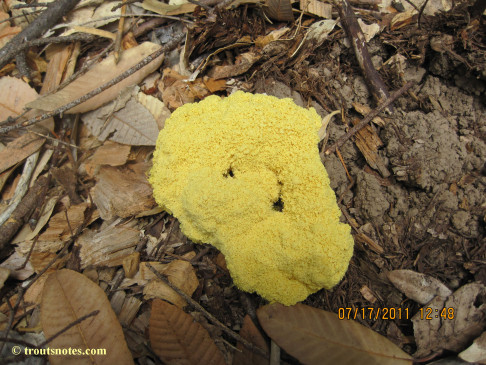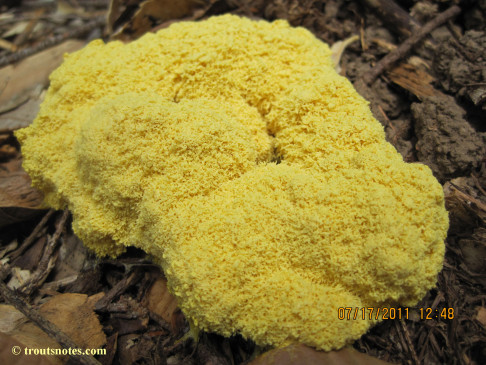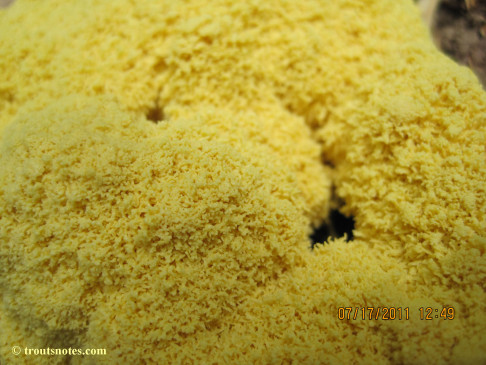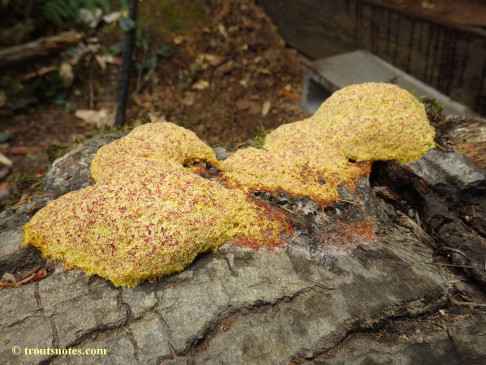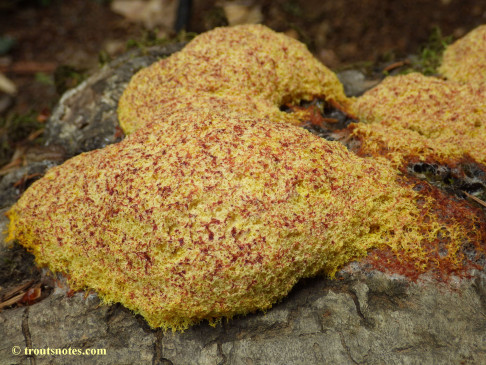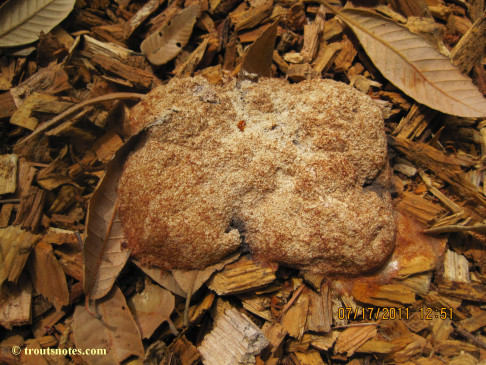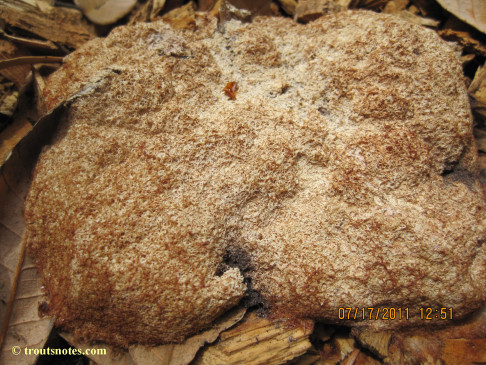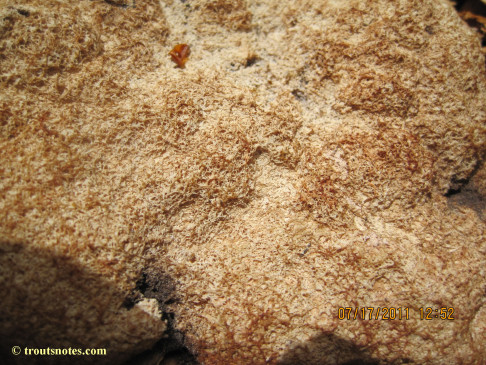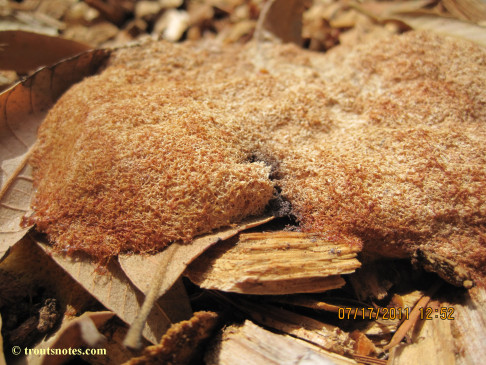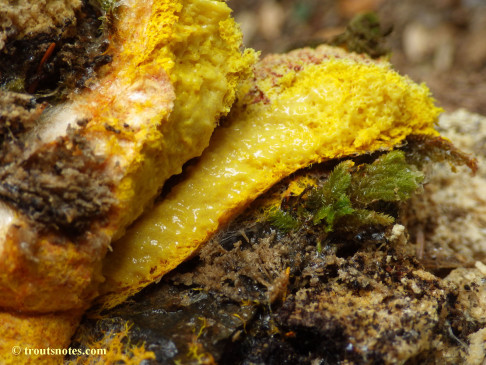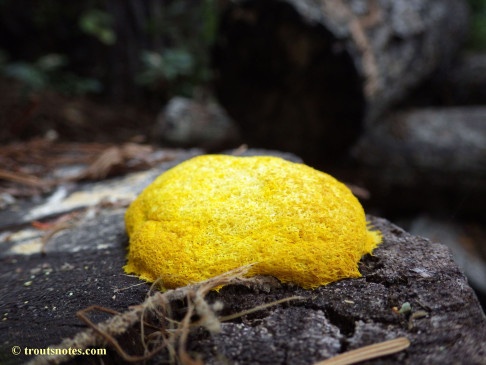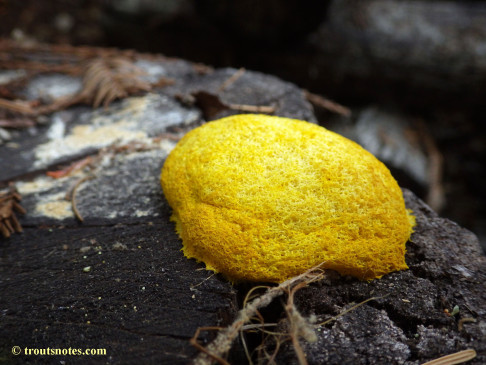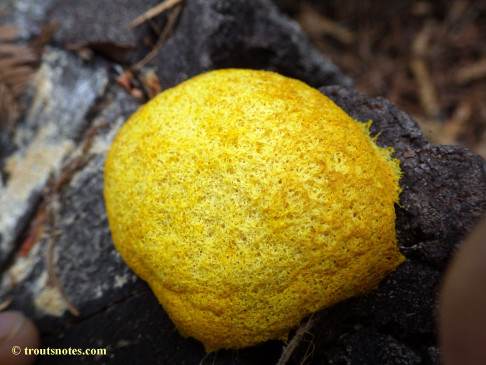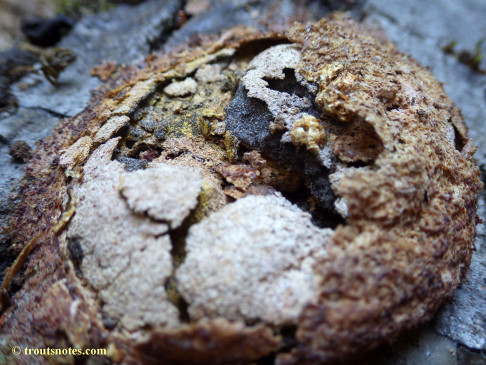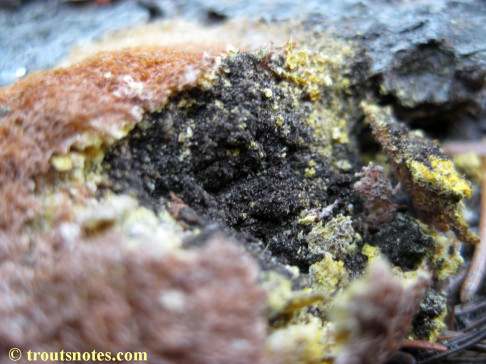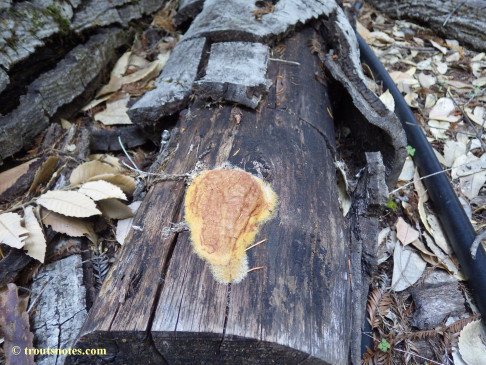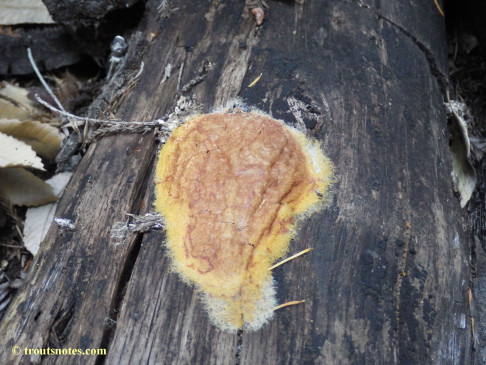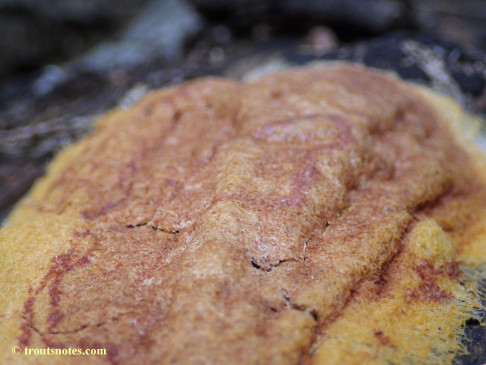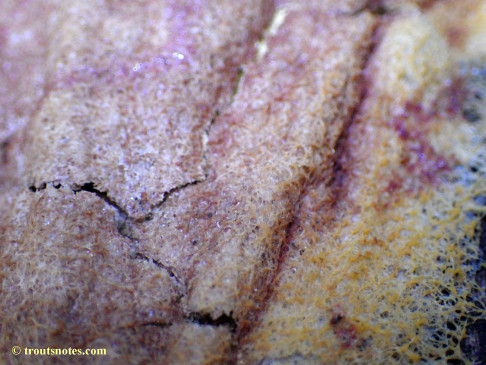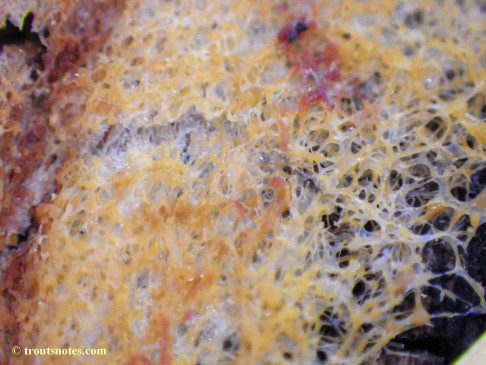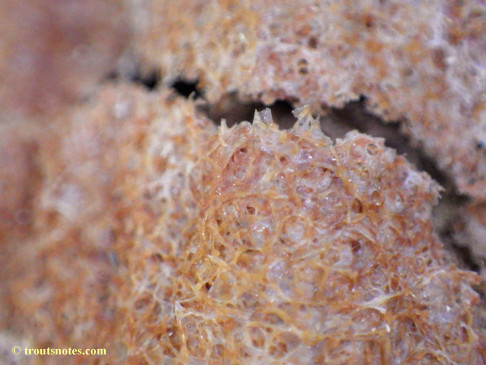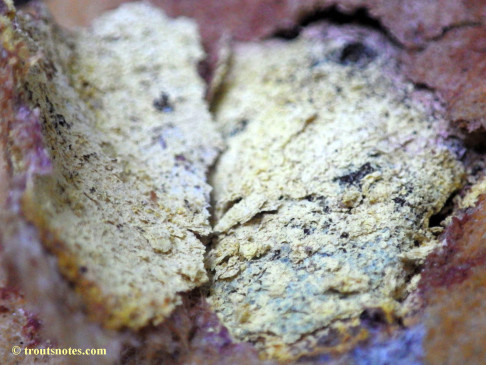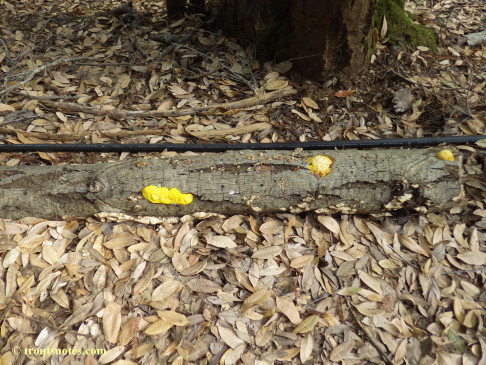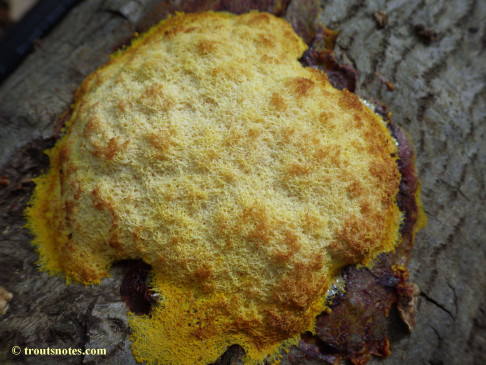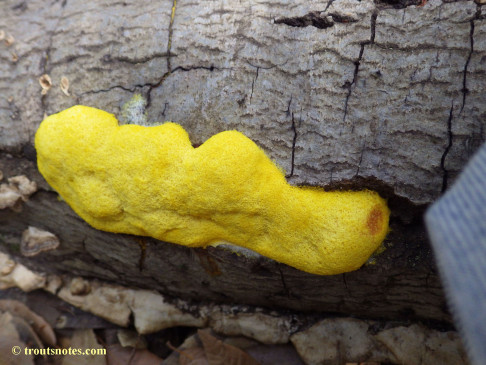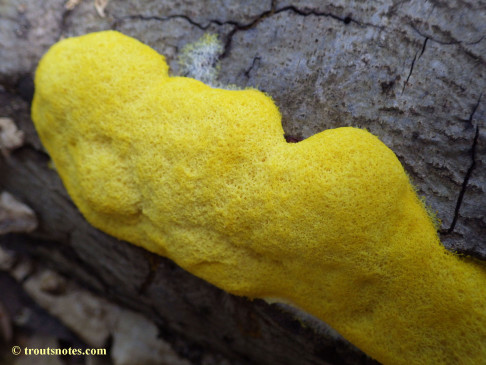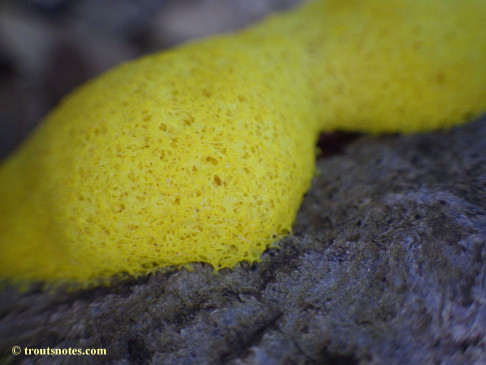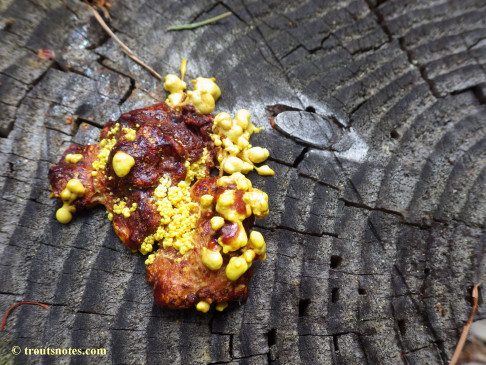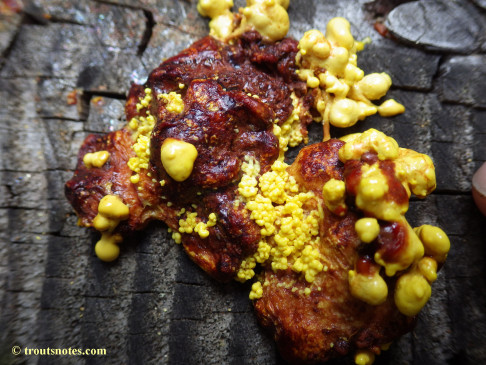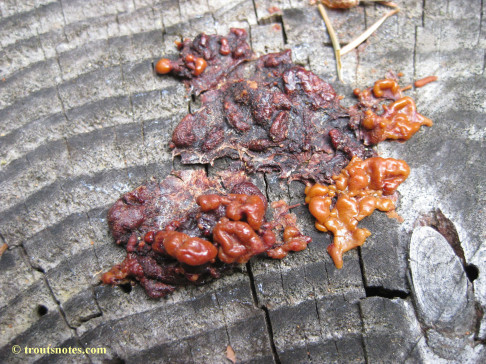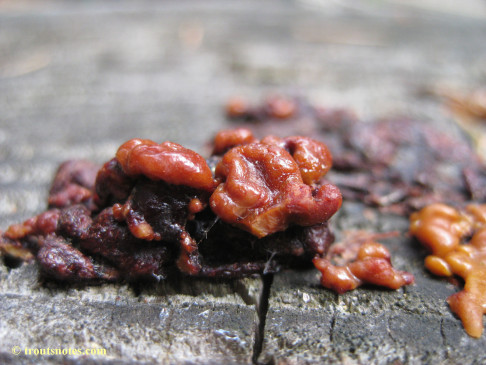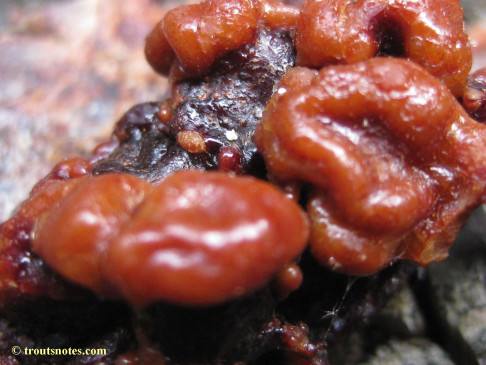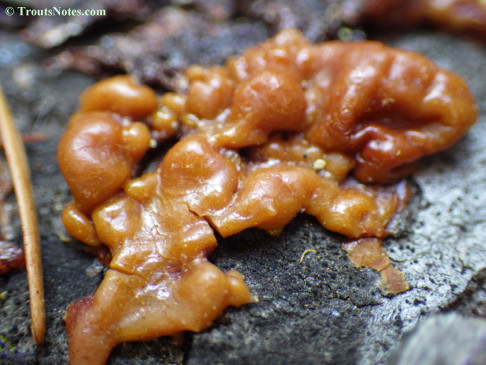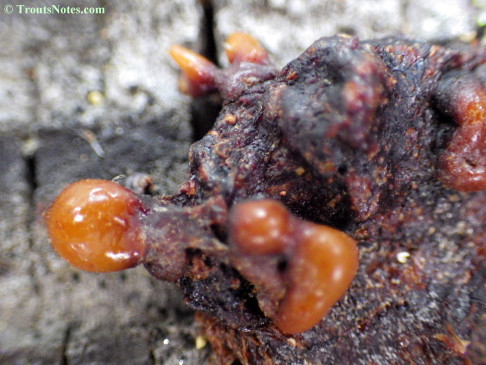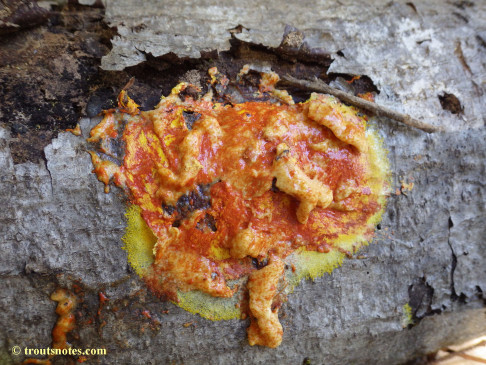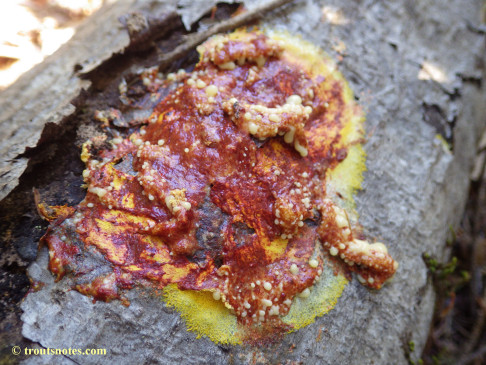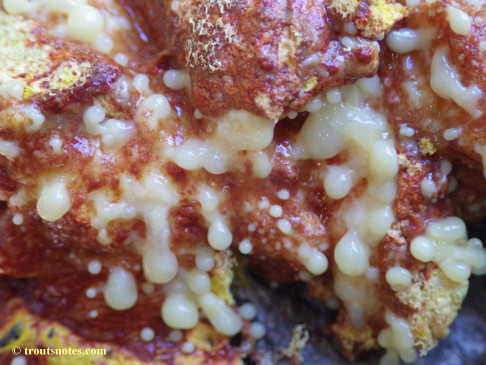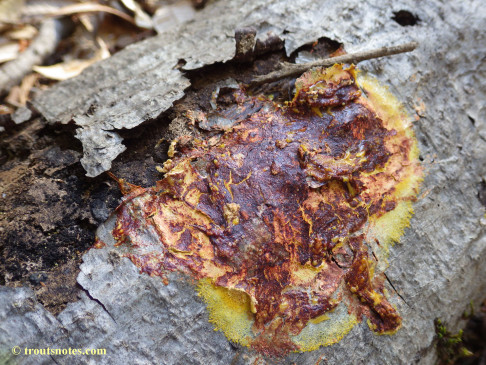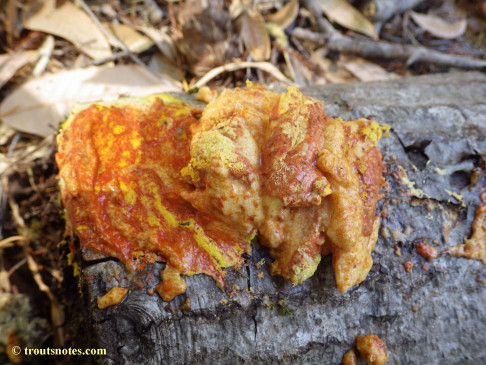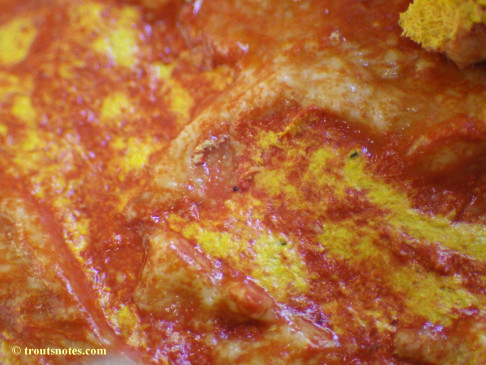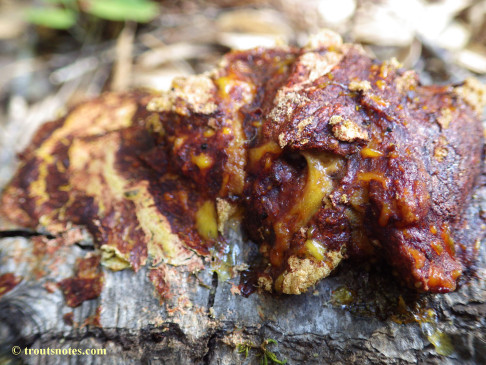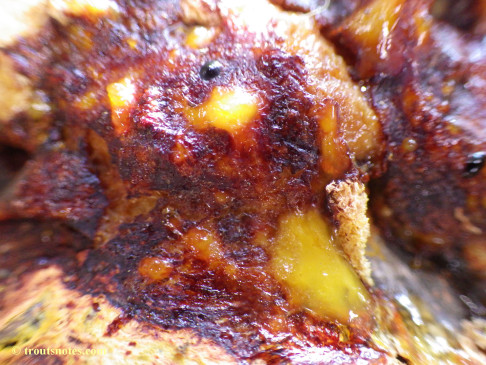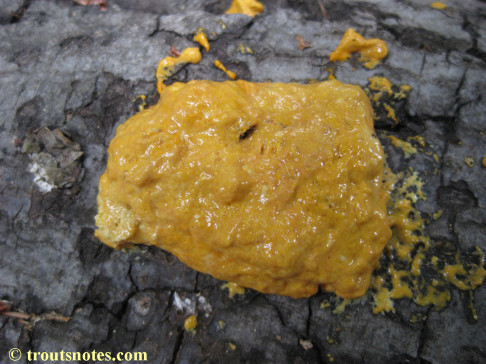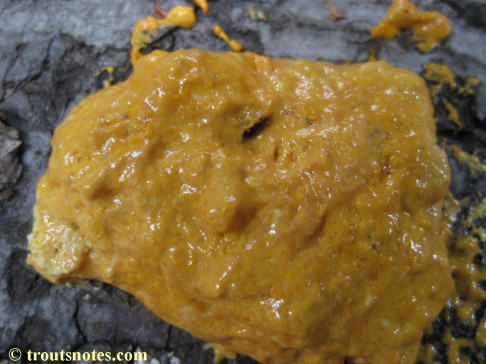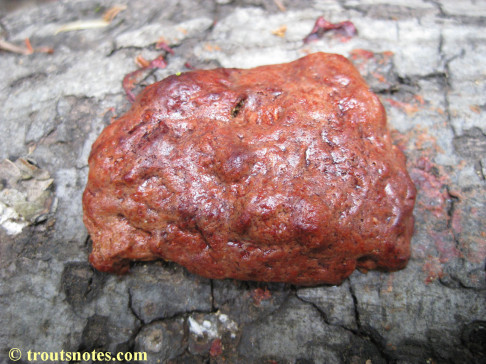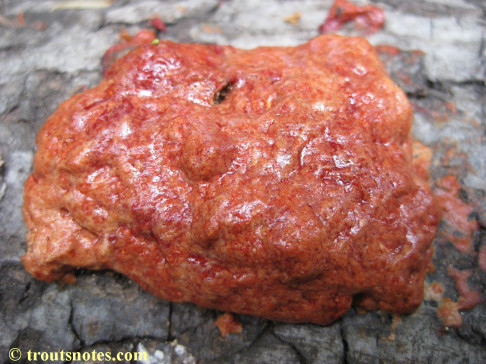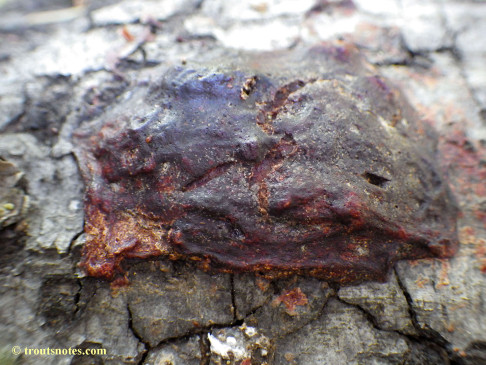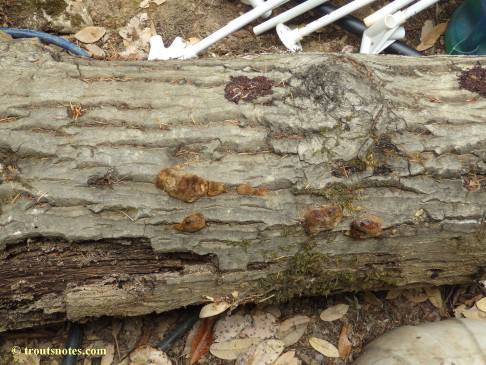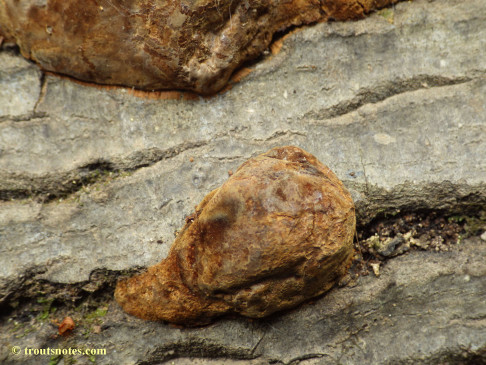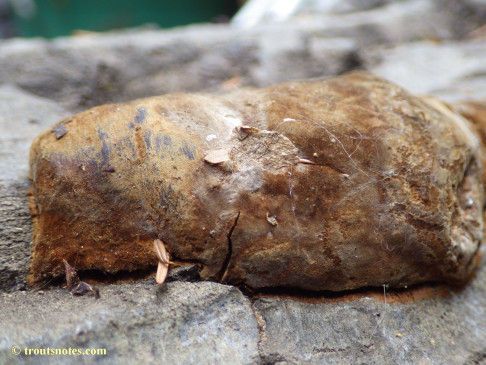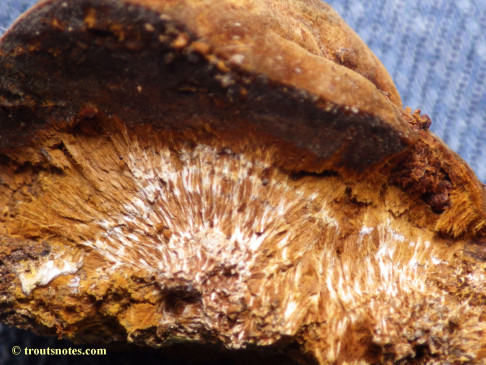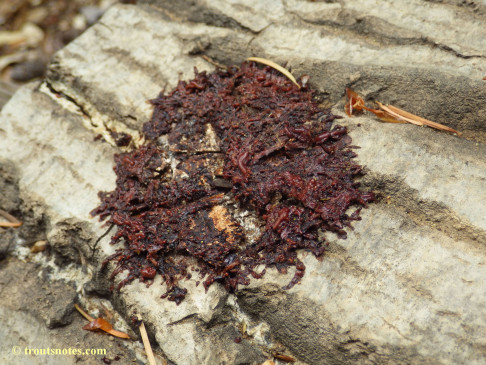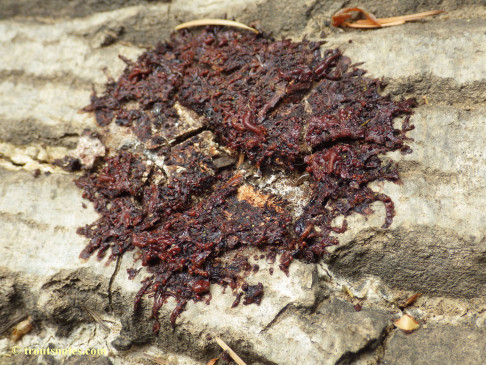Fuligo septica; the “Dog Vomit slime mold”.
It is supposed to be edible and sometimes eaten in Mexico; said to be scrambled like eggs. It is certainly creamy inside when it is a plasmodium and surprisingly is just firm enough to pick up.
These are the drying aethelia/sporangia of that same species.
After noticing some nice and fresh Fuligo septica plasmodia had crawled onto this log last summer, I’d mixed the plasmodia of several of them together in the palm of my hand intending to take the mess to the kitchen and check them out after a round in a frying pan with some butter. The smell was really strong and disgusting so, losing my appetite, I put them down on a stump.
This is what was there hours later — they apparently did not like being mixed together as a wad in my hand. The second ‘battle’ image in this next sequence came from the LAIM site.
And the following day this hard material was all that was visible. I am guessing that material might be slime-mold sclerotia?
That was interesting and novel enough to cause me to try it again; this time using the plasmodia from just two slime molds.
As was the case the first time, I did not get a photograph of the starting point when the color was all a solid yellow.
A while later:
And still later that same afternoon:
One more time. (I yet again did not have a camera with me for the starting point so I suppose perhaps this year I should attempt this with better thoughts about documentation? I doubt any slime molds will agree so I might not bother them.)
Not nearly as impressive as the first one but still fascinating.
Trying it with just one plasmodium gave different results although produced the same sclerotia-like end material.
I decided that I had no business tormenting slime molds or at least causing them to do something with their lives other than being productive as slime molds.
All of that did however give me some insight into the nature of some other oddities I had seen as also being asssociated with slime molds. As a result of that I now believe that both of these things may be sclerotia generated from Fuligo septica plasmodia during summertime? Notice there are two irregular flattish dark-red things towards the center and right back and at least five clumps of a raised and rounded brownishness towards the center and front?
Purportedly if a person wants to raise slime molds, or keep them around as “pets”, the sclerotia is said to be a more reliable starting point than spores.

